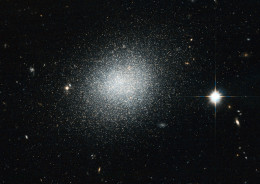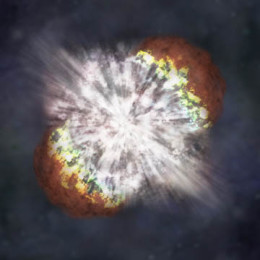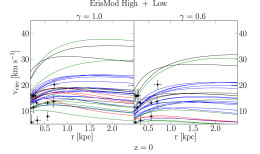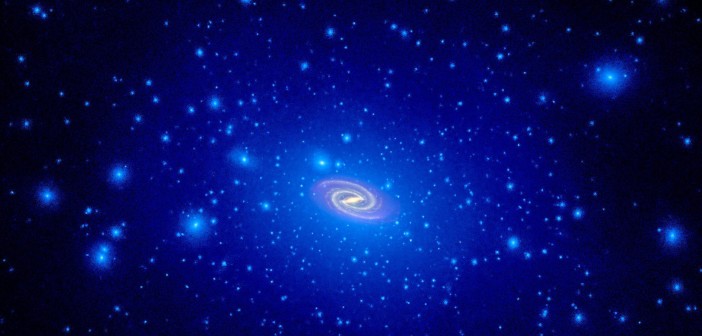It’s a tricky business to reconcile simulations of our galaxy’s formation with our current observations of the Milky Way and its satellites. In a recent study, scientists have addressed one discrepancy between simulations and observations: the so-called “to big to fail” problem.
From “Missing Satellites” to “Too Big to Fail”
The favored model of the universe is the lambda-cold-dark-matter (ΛCDM) cosmological model. This model does a great job of correctly predicting the large-scale structure of the universe, but there are still a few problems with it on smaller scales.

Hubble image of UGC 5497, a dwarf galaxy associated with Messier 81. In the “missing satellite” problem, simulations of galaxy formation predict that there should be more such satellite galaxies than we observe. [ESA/NASA]
This solution creates a new problem, though: the “too big to fail” problem. This problem states that many of the satellites predicted by ΛCDM cosmology are simply so massive that there’s no way they couldn’t have visible stars. Another way of looking at it: the observed satellites of the Milky Way are not massive enough to be consistent with predictions from ΛCDM.

Artist’s illustration of a supernova, a type of stellar feedback that can modify the dark-matter distribution of a satellite galaxy. [NASA/CXC/M. Weiss]
Density Profiles and Tidal Stirring
Led by Mihai Tomozeiu (University of Zurich), a team of scientists has published a study in which they propose a solution to the “too big to fail” problem. By running detailed cosmological zoom simulations of our galaxy’s formation, Tomozeiu and collaborators modeled the dark matter and the stellar content of the galaxy, tracking the formation and evolution of dark-matter subhalos.
Based on the results of their simulations, the team argues that the “too big to fail” problem can be resolved by combining two effects:
- Stellar feedback in a satellite galaxy can modify its dark-matter distribution, lowering the dark-matter density in the galaxy’s center and creating a shallower density profile. Satellites with such shallow density profiles evolve differently than those typically modeled, which have a high concentration of dark matter in their centers.
- After these satellites fall into the Milky Way’s potential, tidal effects such as shocks and stripping modify the mass distribution of both the dark matter and the baryons even further.

Each curve represents a simulated satellite’s circular velocity (which corresponds to its total mass) at z=0. Left: results using typical dark-matter density profiles. Right: results using the shallower profiles expected when stellar feedback is included. Results from the shallower profiles are consistent with observed Milky-Way satellites (black crosses). [Adapted from Tomozeiu et al. 2016]
A Match to Observations
Tomozeiu and collaborators found that when they used traditional density profiles to model the satellites, the satellites at z=0 in the simulation were much larger than those we observe around the Milky Way — consistent with the “too big to fail” problem.
When the team used shallower density profiles and took into account tidal effects, however, the simulations produced a distribution of satellites at z=0 that is consistent with what we observe.
This study provides a tidy potential solution to the “too big to fail” problem, further strengthening the support for ΛCDM cosmology.
Citation
Mihai Tomozeiu et al 2016 ApJ 827 L15. doi:10.3847/2041-8205/827/1/L15

1 Comment
Pingback: the missing satellites problem for DM is solved